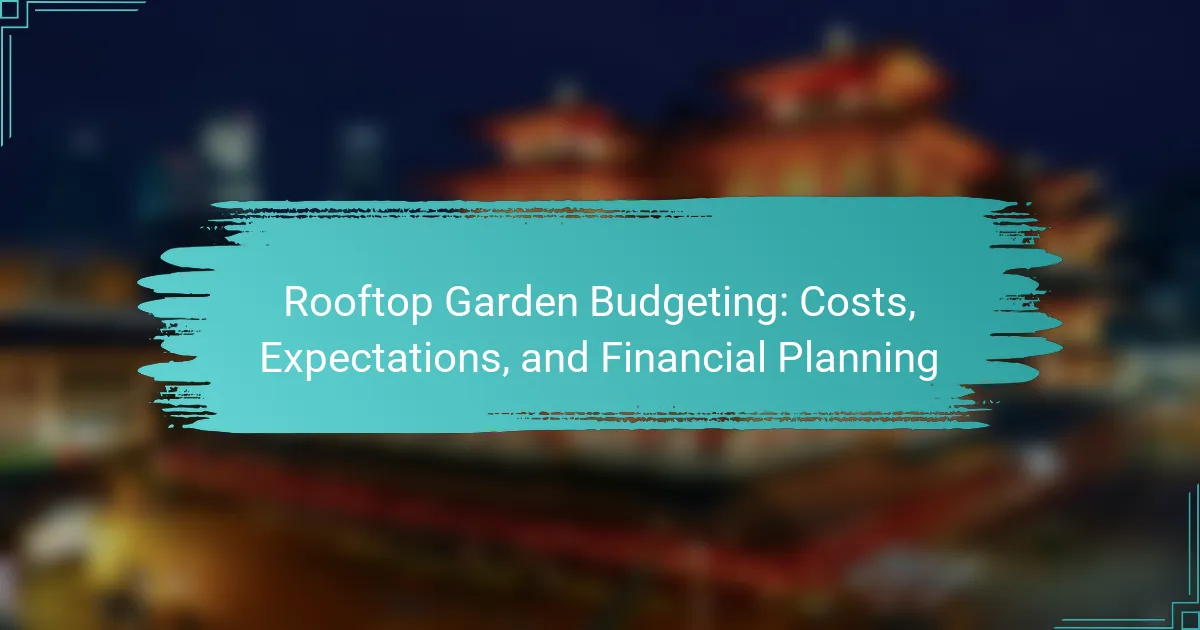Creating a rooftop garden can be a rewarding endeavor, but it requires careful budgeting to manage costs effectively. Initial expenses can range from several thousand to tens of thousands of dollars, influenced by factors such as size, design, and materials. By estimating costs for materials, plants, and ongoing maintenance, you can ensure your project aligns with your financial goals while enhancing your property’s value and aesthetic appeal.

What are the costs of a rooftop garden in New York City?
The costs of establishing a rooftop garden in New York City can vary significantly based on factors like size, design, and materials. Generally, you can expect initial setup costs to range from several thousand to tens of thousands of dollars, with ongoing maintenance adding to the budget over time.
Initial setup costs
Initial setup costs for a rooftop garden typically include structural assessments, waterproofing, soil, plants, and irrigation systems. Depending on the complexity, these expenses can range from around $5,000 for a simple garden to upwards of $30,000 for a more elaborate design with features like seating areas and lighting.
It’s crucial to consider the structural integrity of your building, as additional reinforcements may be necessary, which can further increase costs. Hiring a professional landscape architect can also add to the initial investment but may ensure a more successful and sustainable garden.
Ongoing maintenance expenses
Ongoing maintenance expenses for a rooftop garden can include regular watering, fertilization, pruning, and pest control. On average, you might spend between $100 to $500 monthly, depending on the size of the garden and the level of care required.
Consider hiring a maintenance service or a gardener, especially if you lack the time or expertise. Regular maintenance is essential to keep the garden thriving and to avoid costly repairs or replacements in the future.
Potential financial incentives
New York City offers various financial incentives for rooftop gardens, including tax credits and grants aimed at promoting green spaces. Programs like the NYC Green Roof Tax Abatement can provide significant savings on property taxes for qualifying installations.
Additionally, some utility companies offer rebates for energy-efficient landscaping that can help offset initial costs. Researching these incentives can be beneficial, as they may significantly reduce the financial burden of establishing and maintaining your rooftop garden.
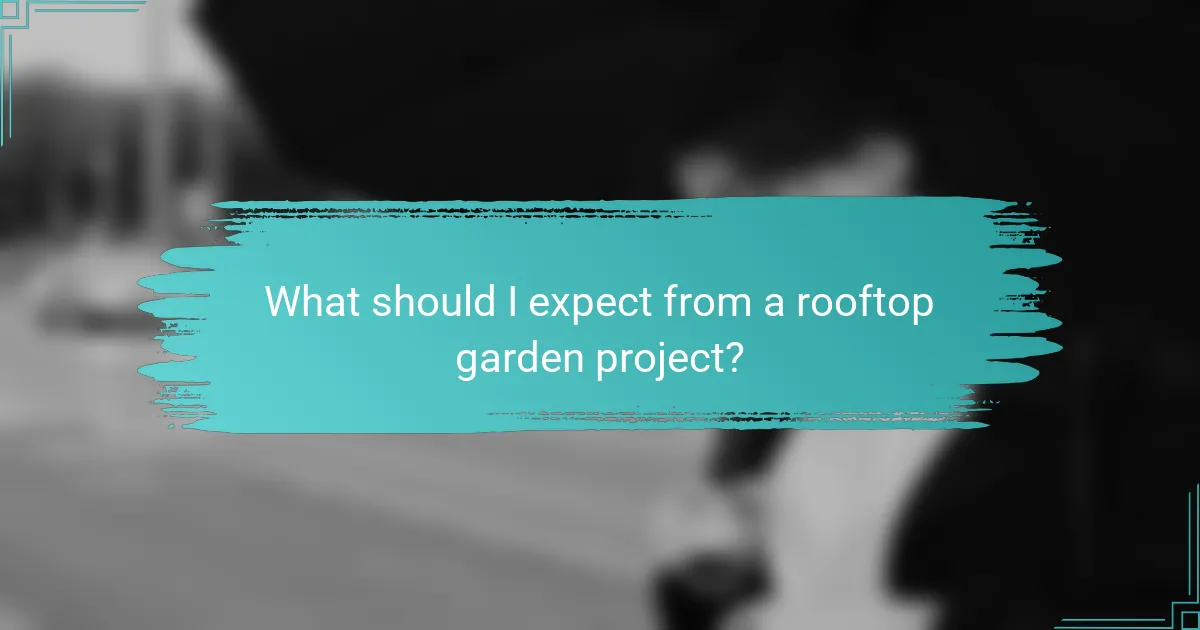
What should I expect from a rooftop garden project?
A rooftop garden project typically involves transforming an unused rooftop space into a vibrant green area. Expect costs to vary based on design complexity, plant choice, and installation requirements, with potential benefits including improved aesthetics, increased property value, and enhanced environmental impact.
Design and layout considerations
When planning a rooftop garden, consider the structural integrity of the building to support the additional weight of soil and plants. It’s essential to consult with a structural engineer to ensure compliance with local building codes and safety regulations.
Design should include elements like pathways, seating areas, and irrigation systems. A well-thought-out layout maximizes space and ensures accessibility, while also considering sunlight exposure and wind protection for optimal plant growth.
Plant selection and growth expectations
Selecting the right plants is crucial for a successful rooftop garden. Choose species that thrive in your local climate and can tolerate the unique conditions of rooftop environments, such as wind and limited soil depth. Popular choices include herbs, succulents, and native plants.
Growth expectations will vary based on plant selection and care. Generally, herbs and vegetables can yield produce within a few months, while perennials may take longer to establish. Regular maintenance, including watering and fertilizing, is essential to ensure healthy growth and longevity of the garden.

How do I budget for a rooftop garden?
Budgeting for a rooftop garden involves estimating costs for materials, plants, and maintenance while considering your financial goals. A well-structured budget helps you manage expenses and ensures your project remains financially viable.
Creating a detailed budget plan
Start by listing all potential expenses associated with your rooftop garden. This includes materials like soil, plants, containers, and irrigation systems, as well as labor costs if you hire professionals. Aim for a comprehensive budget that accounts for both initial setup and ongoing maintenance.
Consider breaking your budget into categories, such as hardscaping, planting, and maintenance. For example, hardscaping might range from a few hundred to several thousand dollars depending on the complexity, while plants can cost anywhere from a few dollars for seedlings to hundreds for mature specimens.
Identifying hidden costs
Hidden costs can significantly impact your rooftop garden budget. These may include structural assessments, waterproofing, and drainage solutions to prevent damage to your building. Always consult with a professional to identify these potential expenses early in the planning process.
Additionally, consider ongoing costs such as water, fertilizers, and pest control. These recurring expenses can add up, so estimate them based on your garden’s size and plant types. A good rule of thumb is to allocate around 10-20% of your initial budget for unforeseen costs.
Setting financial goals
Establish clear financial goals for your rooftop garden project. Determine how much you are willing to invest initially and what your long-term maintenance budget will be. This helps keep your spending in check and aligns with your overall financial situation.
Consider setting milestones for your garden’s development, such as achieving a certain level of plant growth or producing your first harvest. These goals can help you stay motivated and provide a sense of accomplishment as you progress with your rooftop garden.
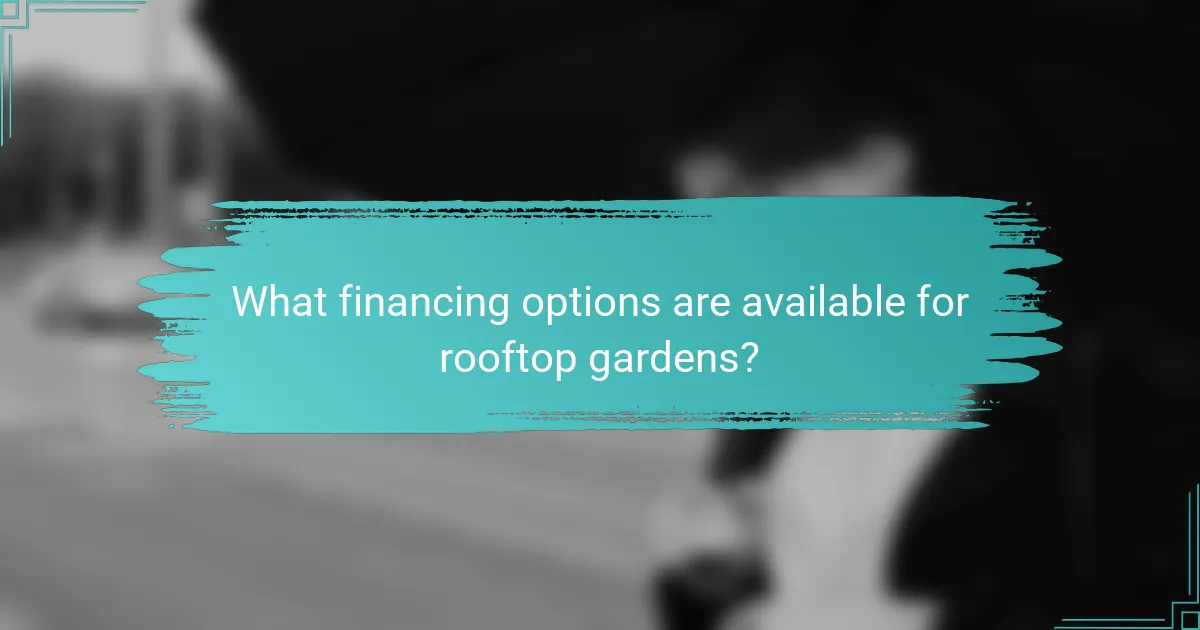
What financing options are available for rooftop gardens?
Several financing options exist for rooftop gardens, including personal loans, grants, and subsidies. Each option has its own advantages and considerations, allowing you to choose the best fit for your financial situation and project goals.
Personal loans and financing
Personal loans can be a straightforward way to fund your rooftop garden. These loans typically offer fixed interest rates and repayment terms, making budgeting easier. Depending on your credit score, you might secure a loan with rates ranging from low to mid-teens percent.
When considering a personal loan, evaluate your monthly budget to ensure you can comfortably make repayments. It’s advisable to shop around for the best rates and terms, as different lenders may offer varying conditions. Avoid borrowing more than necessary to keep your financial obligations manageable.
Grants and subsidies
Grants and subsidies can significantly reduce the financial burden of establishing a rooftop garden. These funds are often provided by local governments, non-profits, or environmental organizations aimed at promoting green spaces. Eligibility criteria can vary, so it’s essential to research available programs in your area.
To apply for grants, prepare a clear proposal outlining your project’s benefits, such as environmental impact and community engagement. Keep in mind that the application process may require detailed documentation and can be competitive. Regularly check local resources and websites for new funding opportunities to maximize your chances of receiving support.
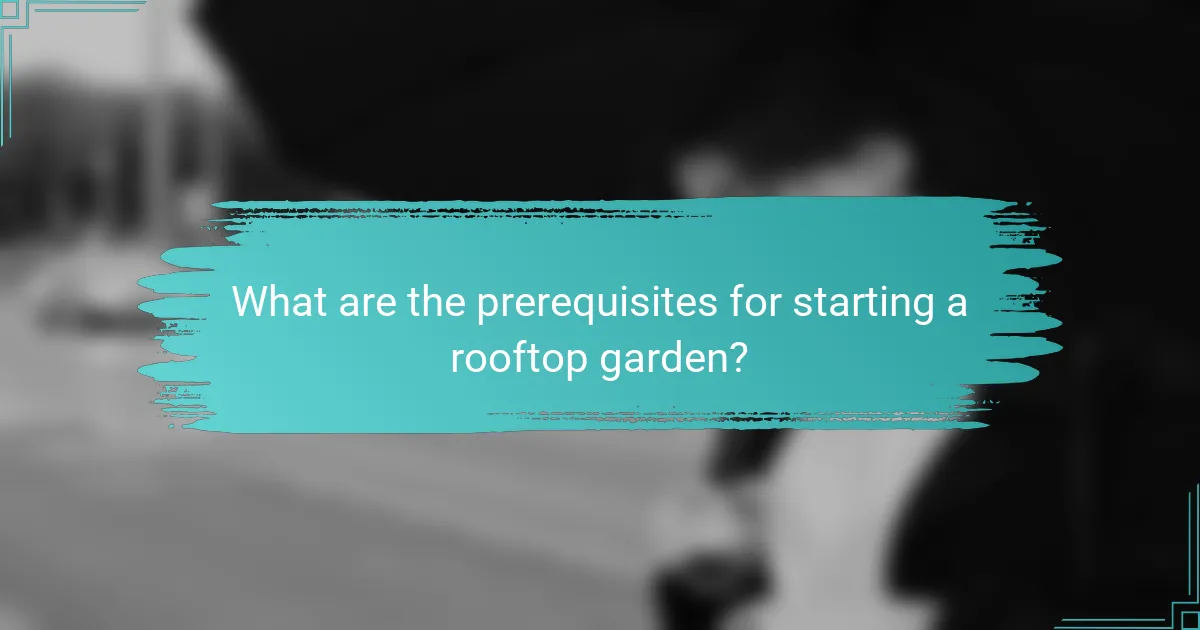
What are the prerequisites for starting a rooftop garden?
Starting a rooftop garden requires careful planning and consideration of various factors, including building regulations, structural integrity, and environmental conditions. Understanding these prerequisites will help ensure a successful and sustainable gardening experience.
Building regulations and permits
Before establishing a rooftop garden, it’s crucial to check local building regulations and obtain any necessary permits. Many cities have specific zoning laws that dictate what can be built on rooftops, including restrictions on weight, height, and types of plants.
Consult with your local municipality or a professional to understand the requirements. In some cases, you may need to submit plans for approval, which could involve fees ranging from low tens to hundreds of dollars depending on your location.
Structural assessments
A structural assessment is essential to ensure that your rooftop can support the weight of a garden, including soil, plants, and water. Engage a qualified engineer to evaluate the load-bearing capacity of your building’s roof.
Typically, a rooftop garden can weigh several hundred kilograms per square meter when fully saturated with water. Knowing this can help you determine the feasibility of your project and avoid potential safety hazards.
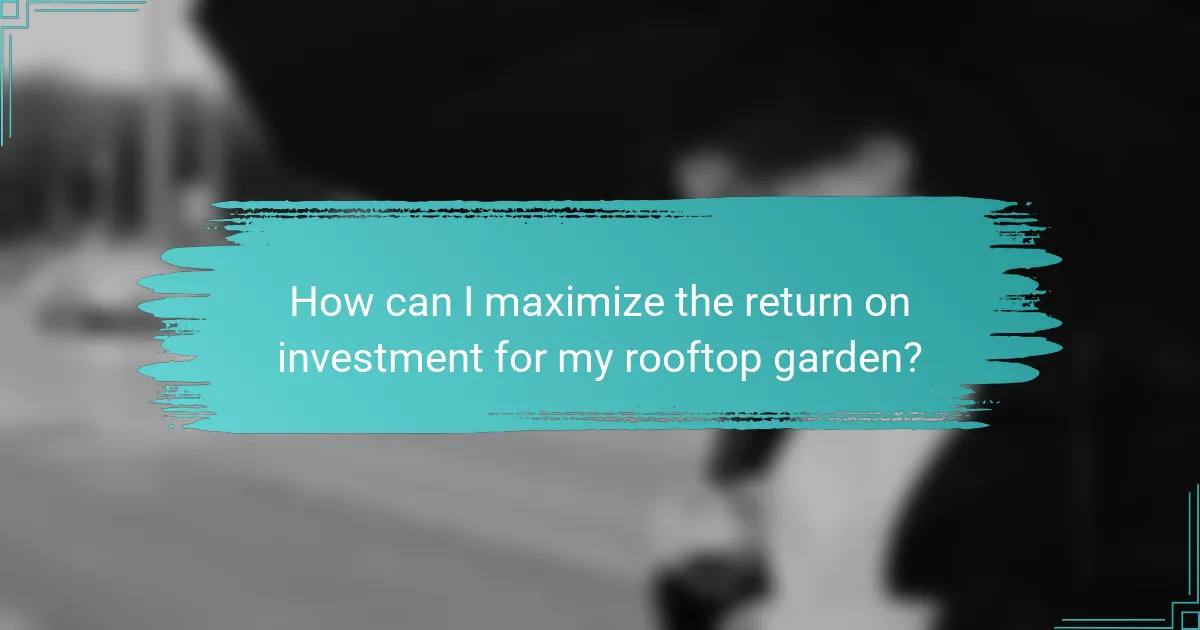
How can I maximize the return on investment for my rooftop garden?
To maximize the return on investment for your rooftop garden, focus on selecting high-value plants, optimizing space, and implementing efficient maintenance practices. These strategies can enhance both the aesthetic appeal and the functional benefits of your garden, ultimately increasing its value.
Choosing high-value plants
Selecting high-value plants is crucial for maximizing your rooftop garden’s return on investment. Look for plants that not only thrive in your local climate but also offer benefits like edibility, low maintenance, or aesthetic appeal. Consider native species, as they often require less water and care.
Popular choices include herbs, vegetables, and flowering plants that attract pollinators. For example, herbs like basil and rosemary can be used in cooking, while flowering plants like lavender can enhance the garden’s beauty and attract beneficial insects. Aim for a mix that balances aesthetics with practicality.
When budgeting for plants, consider the initial cost versus long-term benefits. While some high-value plants may have a higher upfront cost, their ability to produce food or require less maintenance can lead to savings over time. Research local nurseries for competitive pricing and consider starting from seeds to reduce costs further.
